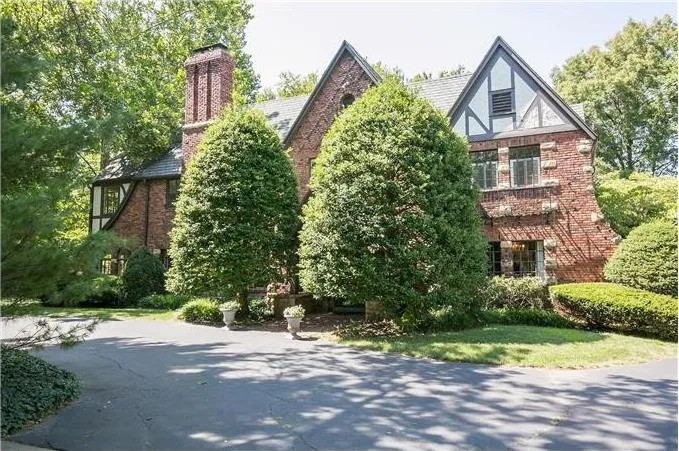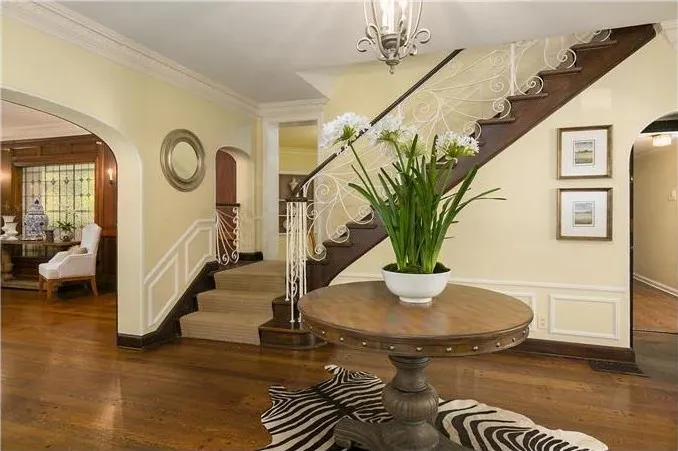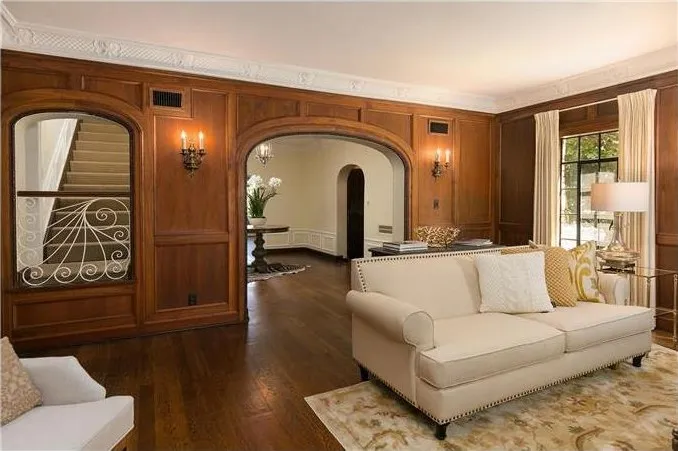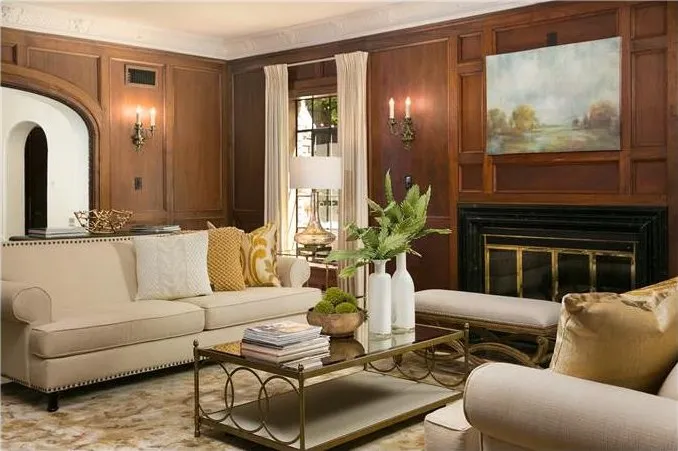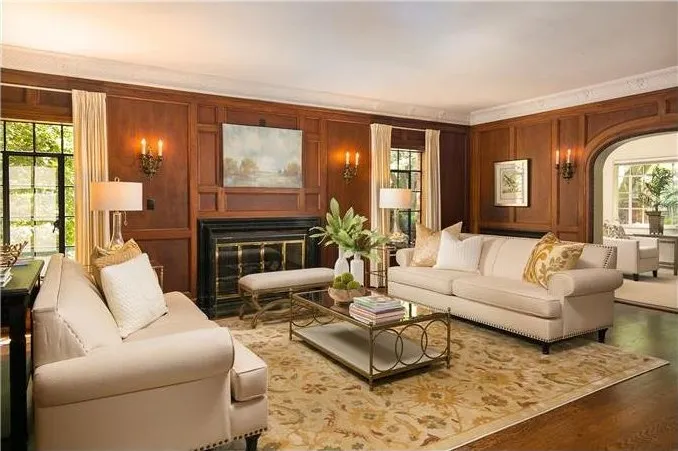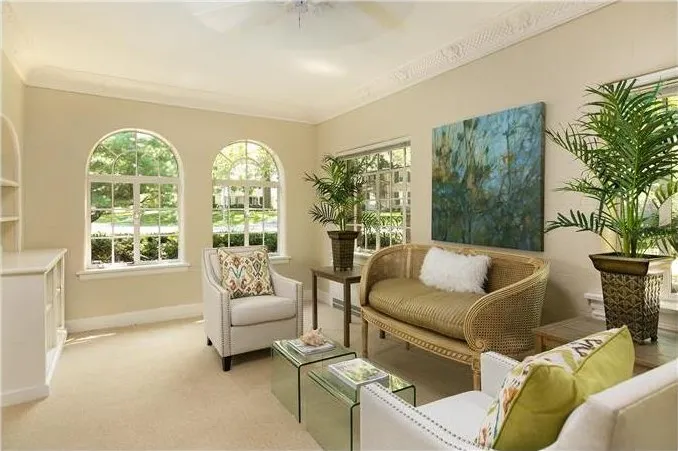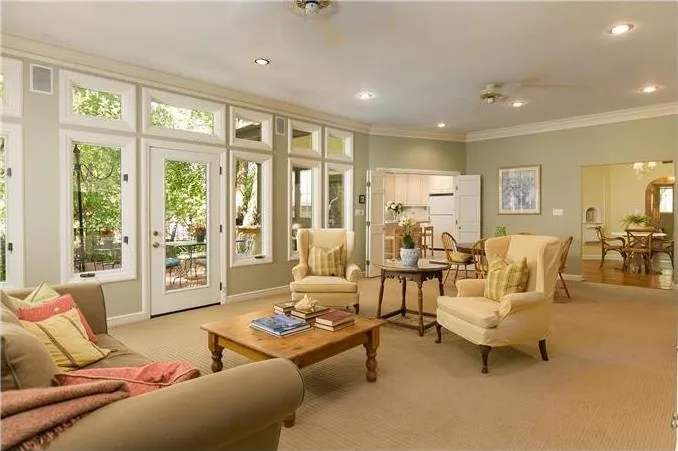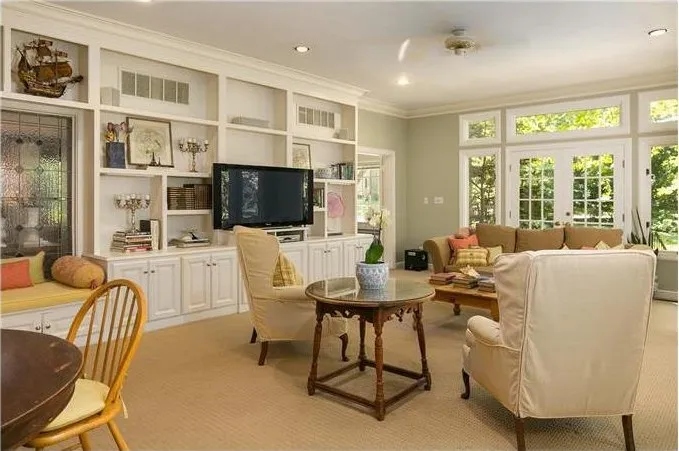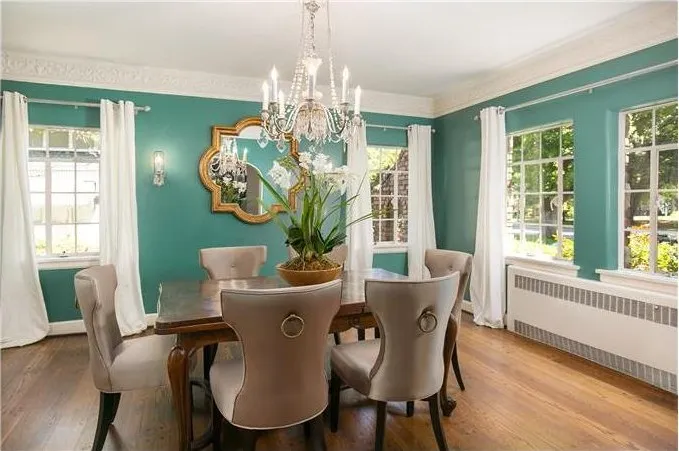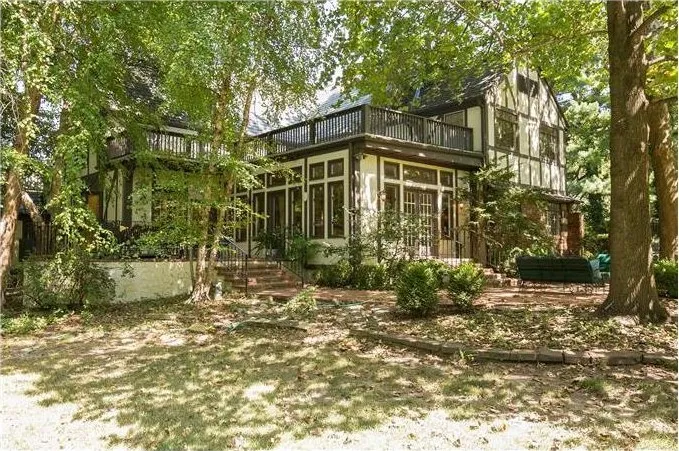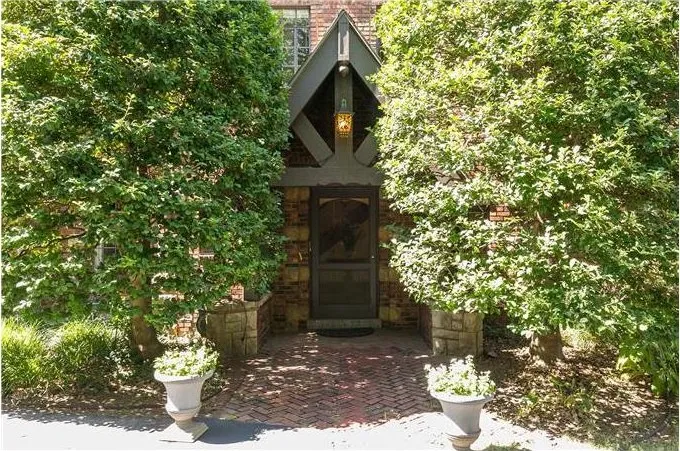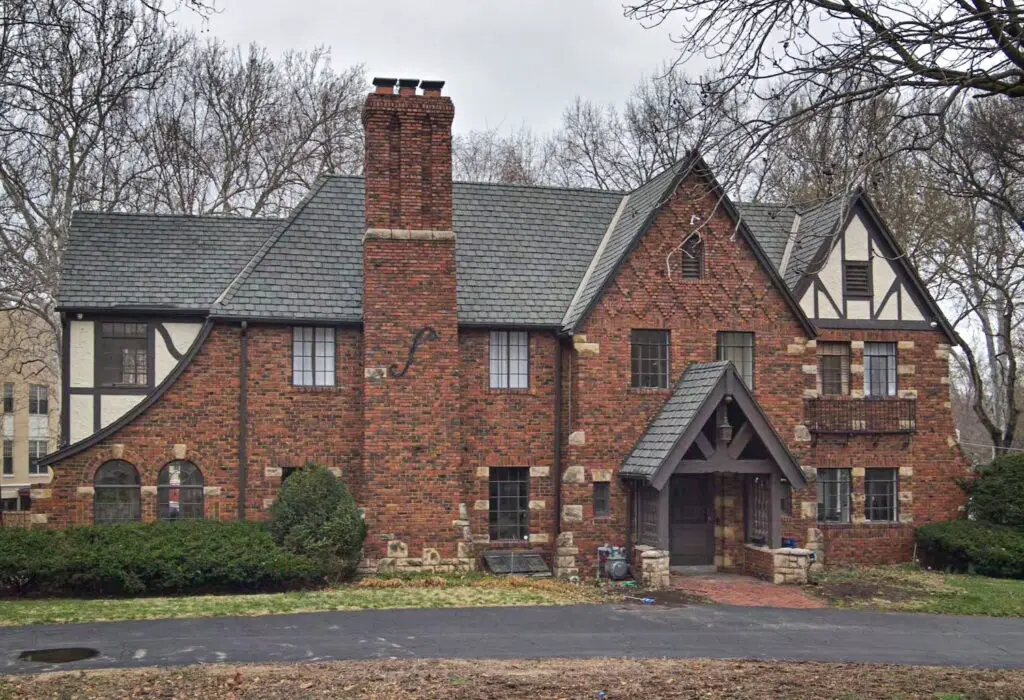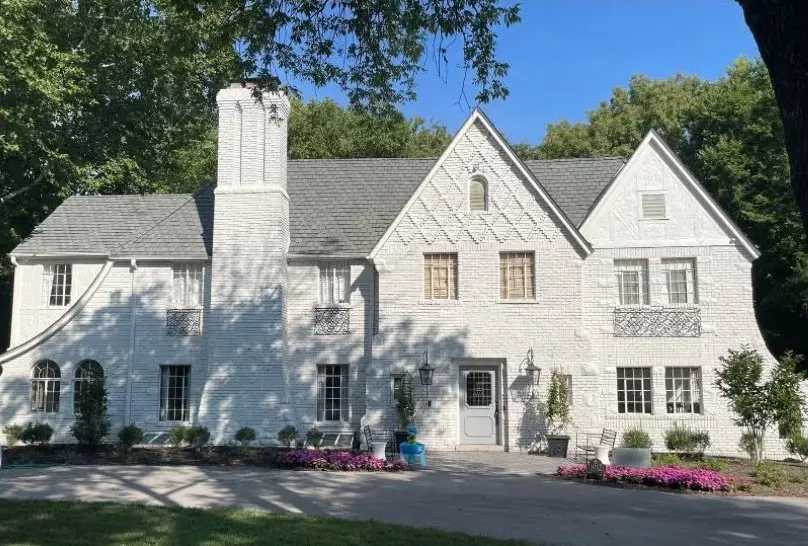Before & After: Circa 1930 Brick Tudor Revival Modernized in the Midwest
United States
Originally built in 1930, this stately Tudor Revival residence stood as a beautiful example of early 20th-century craftsmanship and architectural character. With over 4,800 square feet of interior living space, the home features six bedrooms and four and a half bathrooms—ample room for family living and elegant entertaining.
The Original Design
The home’s exterior was a textbook example of Tudor Revival style, blending multi-colored brickwork with rich stone accents, decorative half-timbering, and a prominent brick chimney. A grand Tudor-style portico framed the front entrance, offering a striking focal point that emphasized the home’s classic symmetry and charm. Surrounding the house was a lush, mature landscape, softening the architectural lines and enhancing its timeless appeal.
Inside, the original rooms were likely filled with period details—arched doorways, plaster walls, dark-stained woodwork, and possibly leaded-glass windows—all hallmarks of the Tudor aesthetic. Though only a few before photos remain, they hint at a warm, character-filled interior steeped in history.
The Modern Transformation
The recent renovation has dramatically reimagined the home, giving it a crisp, minimalist identity that contrasts sharply with its historic roots. The entire exterior—brick, stone, and timber—has been painted a uniform white, creating a sleek and contemporary appearance. This monochromatic finish simplifies the home’s once intricate textures, bringing a sense of modern cohesion but also sparking debate among preservation enthusiasts.
Perhaps the most significant alteration is the removal of the large Tudor portico, which once provided depth and ornamentation to the front façade. In its absence, the entryway now presents a cleaner, more streamlined profile, though some might argue it diminishes the architectural soul of the home. Additionally, much of the original landscaping was cleared away, replaced with a more minimal, open layout that complements the modern aesthetic but lacks the romantic lushness of the original garden.
A Debate in Design
Painting brick remains one of the most polarizing choices in home renovation. Some view it as a refreshing way to modernize dated architecture and bring lightness to heavy materials. Others see it as an irreversible loss of historical integrity, covering textures and colors that took decades to develop. This particular renovation captures that tension perfectly—an interplay between preservation and progress, nostalgia and novelty.
The Verdict: Before or After?
In the end, the transformation of this 1930 Tudor Revival invites conversation about the evolving nature of design. While the “after” version embodies clean lines and modern minimalism, the “before” held a richness and depth that spoke to its era. Both interpretations have their admirers, and the question remains: which side are you on? Do you favor the timeless charm of the original or the bold simplicity of the new?
Photography: Realtor & Pinterest
